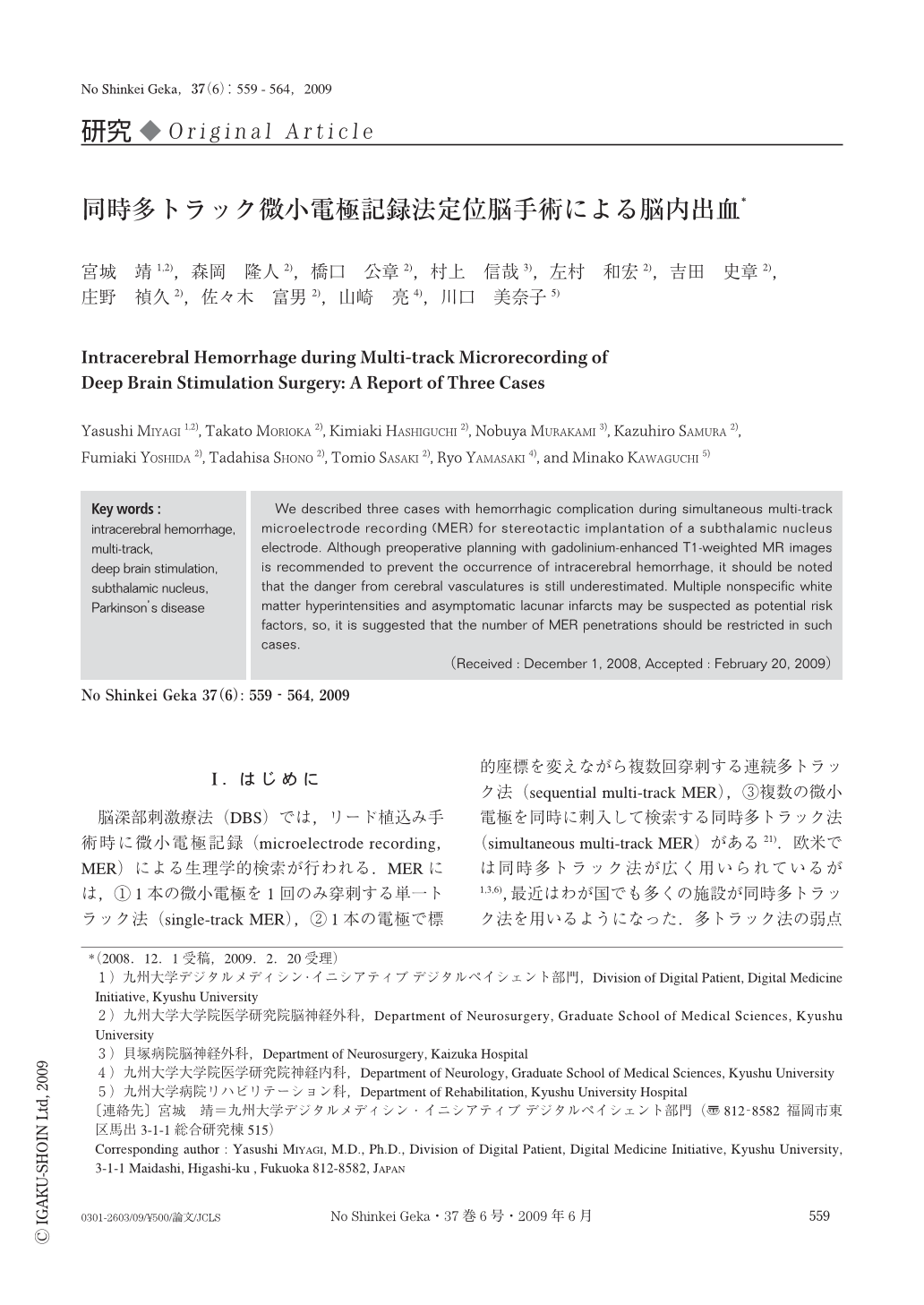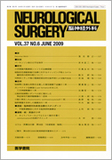Japanese
English
- 有料閲覧
- Abstract 文献概要
- 1ページ目 Look Inside
- 参考文献 Reference
Ⅰ.はじめに
脳深部刺激療法(DBS)では,リード植込み手術時に微小電極記録(microelectrode recording,MER)による生理学的検索が行われる.MERには,①1本の微小電極を1回のみ穿刺する単一トラック法(single-track MER),②1本の電極で標的座標を変えながら複数回穿刺する連続多トラック法(sequential multi-track MER),③複数の微小電極を同時に刺入して検索する同時多トラック法(simultaneous multi-track MER)がある21).欧米では同時多トラック法が広く用いられているが1,3,6),最近はわが国でも多くの施設が同時多トラック法を用いるようになった.多トラック法の弱点は脳内出血の危険性が危惧されることであるが,カドリニウム(Gd)造影剤で脳血管を強調したMRIによる手術計画が推奨されており12),われわれもこれに従っている.しかし術前の造影MRIで血管構造を回避するpathを設定したにもかかわらず,やはり脳内出血は起きうる.われわれの遭遇した3例の脳内出血(皮質下,深部白質,基底核)をもとに,同時多トラック法に伴う出血性合併症について注意を喚起する意味で報告する.
We described three cases with hemorrhagic complication during simultaneous multi-track microelectrode recording (MER) for stereotactic implantation of a subthalamic nucleus electrode. Although preoperative planning with gadolinium-enhanced T1-weighted MR images is recommended to prevent the occurrence of intracerebral hemorrhage, it should be noted that the danger from cerebral vasculatures is still underestimated. Multiple nonspecific white matter hyperintensities and asymptomatic lacunar infarcts may be suspected as potential risk factors, so, it is suggested that the number of MER penetrations should be restricted in such cases.

Copyright © 2009, Igaku-Shoin Ltd. All rights reserved.


